
Euphorbia albomarginata, whitemargin sandmat or rattlesnake weed, is a small low-growing perennial, in the spurge family native to desert, chaparral, and grassland habitats of southwestern North America, from southern and central California to Northern Mexico and Louisiana.
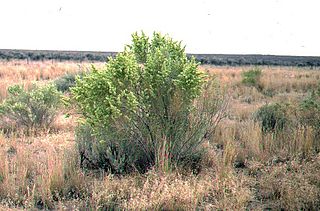
Atriplex canescens is a species of evergreen shrub in the family Amaranthaceae native to the western and midwestern United States.

Juniperus monosperma is a species of juniper native to western North America, in the United States in Arizona, New Mexico, southern Colorado, western Oklahoma (Panhandle), and western Texas, and in Mexico in the extreme north of Chihuahua. It grows at 970–2300 m altitude.

Lithospermum incisum is a species of flowering plant in the borage family known by several common names, including fringed puccoon, narrowleaf stoneseed, fringed gromwell, narrowleaf puccoon, and plains stoneseed. It is native to much of central Canada and the United States, where it is known from many types of habitat, but particularly piñon-juniper woodland. It is a hairy perennial herb growing from a narrow brown to black taproot and woody caudex. It produces a cluster of stems up to about 30 centimeters long. The stems are lined with narrow, pointed leaves up to 6 centimeters long. The slender, trumpet-shaped flowers are pale to bright yellow or gold, and may approach 4 centimeters long. The corolla face is 1 to 2 centimeters wide, its lobes sometimes ruffled. The smaller cleistogamous (closed) flowers are the main producers of seed.

Eriogonum jamesii is a species of wild buckwheat known by the common name James' buckwheat and antelope sage. It is native to the southwestern United States, being found in: Colorado, Utah, Arizona, Texas, New Mexico, Oklahoma, and Nebraska.

Atriplex argentea is a species of saltbush known by the common names silverscale saltbush and silver orache. It is native to western North America from southern Canada to northern Mexico, where it grows in many types of habitat, generally on saline soils.
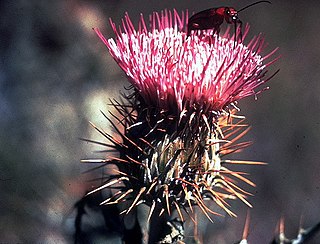
Cirsium ochrocentrum is a species of thistle known by the common name yellowspine thistle. It is native to the Great Plains of the Central United States and to the desert regions of the western United States and northern Mexico. Its range extends from eastern Oregon east to the Black Hills of South Dakota, south as far as the Mexican State of Durango.
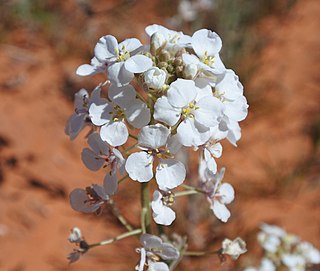
Dimorphocarpa wislizeni, commonly known as spectacle pod, Wislizeni's spectaclepod, and touristplant, is a flowering plant in the mustard family native to western North America, where it occurs in the southwestern United States as far east as Oklahoma and Texas, and Baja California, Sonora, Chihuahua, and Coahuila in Mexico.

Mirabilis multiflora is a species of flowering plant in the four o'clock family known by the common names Colorado four-o'clock or desert four-o'clock that is native to the southwestern United States from California to Colorado and Texas, as well as far northern Mexico, where it grows in mostly dry habitat types in a number of regions.
Calliandra humilis, the dwarf stickpea, is a species of flowering plants of the genus Calliandra in the family Fabaceae.

Phoradendron juniperinum is a species of flowering plant in the sandalwood family known by the common name juniper mistletoe. It is native to the southwestern United States and northern Mexico, where it grows in various types of woodland habitat. It has been reported from California, Nevada, Arizona, New Mexico, Oregon, Utah, Texas, Chihuahua and Sonora.
This is a list of plants and how they are used in Zuni culture.
Dalea compacta, with the common name compact praireclover, is a plant of the Southwestern United States. It is a perennial herb growing up to 2 feet tall.

Eriogonum alatum, with the common names winged buckwheat and winged eriogonum, is a species of buckwheat.

Ipomopsis longiflora, common name flaxflowered gilia or flaxflowered ipomopsis, is a plant. The Zuni people use the dried, powdered flowers and water of I. longiflora subsp. longiflora to create a poultice to remove hair on newborns and children.
Ottleya wrightii, synonym Lotus wrightii, is a species of legume native to the southwestern United States. It is also said to occur in Nevada. It is known as Wright's deervetch.
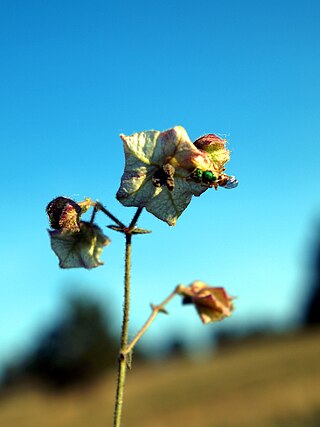
Mirabilis linearis, commonly known as narrowleaf four o'clock, is a species of plant. Among the Zuni people, the root is eaten to induce urination and vomiting. They also take an infusion of the root for stomachache.
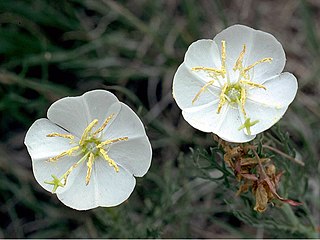
Oenothera coronopifolia, the crownleaf evening primrose, is a plant species. The Zuni people apply a poultice of the powdered flower and saliva night to swellings.
Phacelia neomexicana, common names New Mexico phacelia and New Mexico scorpionweed, is a plant. The Zuni people mix the powdered root with water and use it for rashes.

Asclepias involucrata, synonym Asclepias macrosperma, is a perennial plant in the family Apocynaceae native from the west and south central United States to north Mexico. In the southwestern United States, it is found in the Colorado Plateau and Canyonlands region.
















